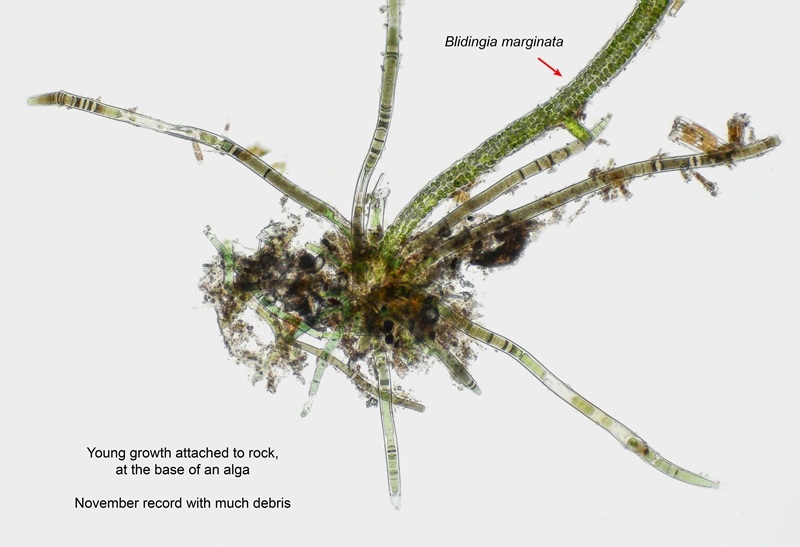They are more common during drought conditions and a significant rain event will likely dissipate the mats.
Lyngbya alage mats.
Lyngbya is a blue green algae or cyanobacteria that grows in thick mats.
Lyngbya is a genus of cyanobacteria unicellular autotrophs that form the basis of the oceanic food chain.
Lyngbya is a problematic aquatic growth that is common to many ponds in north texas.
Lingbya can grow to be several inches thick covering large areas of the waters surface or bottom sediment.
Much as pennies are stacked within a roll of coins.
An individual lyngbya filament is usually unbranched it is composed of large discoid cells that are stacked within a firm polysaccharide sheath.
Healthy mats are usually blue black but turn yellow green under intense light.
Sheaths may form tangles or mats intermixed with other.
Lyngbya species form long unbranching filaments inside a rigid mucilaginous sheath.
This is bad news for a number of reasons beyond the problems caused by less noxious algae.
The algal mats were identified as lyngbya and spirulina.
A survival specialist lyngbya uses several mechanisms to ensure it stays happy and healthy.
These mats produce gasses during photosynthesis that often cause the mats to rise to the surface.
Long and hair like this filamentous alga can form large benthic and surface mats blooms.
If you re unlucky enough to have the giant variety known as lyngbya wollei these mats can quickly grow to several acres in size if left untreated.
Lyngbya is one group of cyanobacteria of special concern.
Mats often float to the surfa.
Its thick glycoprotein sheath adds an extra physical barrier that fortifies the cell wall.
Lyngbya is a large celled filamentous mat forming algae.
It ranges in color and usually appears green brown gray or black.
When handled it feels like wet wool or cotton.
Clumps are difficult to pull apart.
Black mat algae grows at the bottom of slow moving freshwaters.
E g moorea limnoraphis okeania microseira and dapis.
Lyngbya normally grows in dense mats at the bottoms of nutrient enriched lakes and spring fed systems.
As a result of recent genetic analyses several new genera was erected from this genus.
These mats are usually tan greenish and sometimes black in color and can be mistakenly identified as dead floating algae.
On top of this layer is an established microbial community or microbiota that works mutualistically with the lyngbya the microbiota defends its host by helping to gather resources for growth or shielding it.

